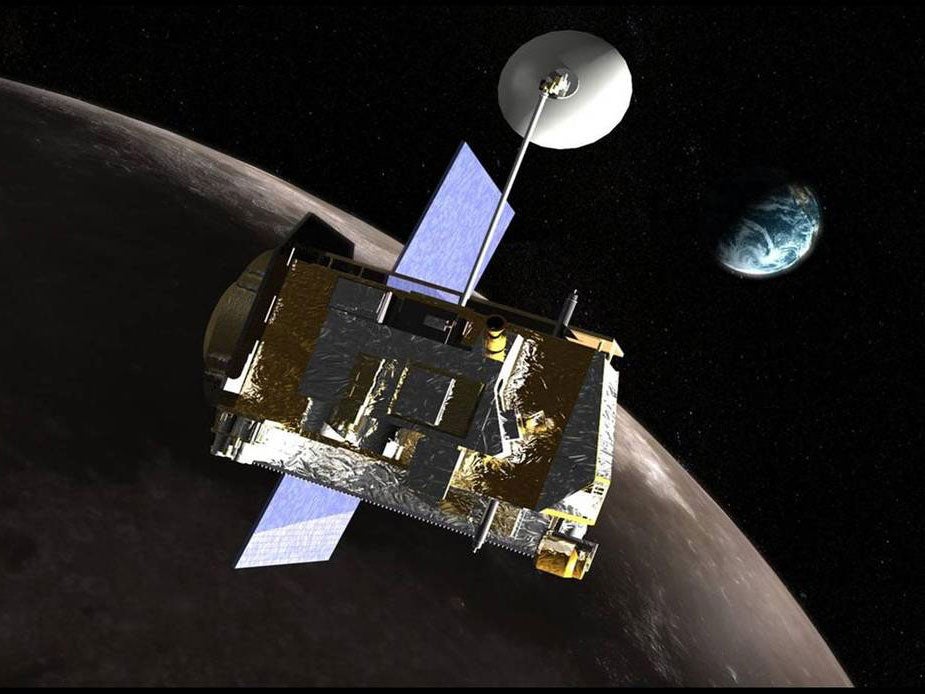Supermoon lunar eclipse could threaten one of Nasa’s most important pieces of technology
Scientists are confident that the spacecraft will make it through, and get the chance to find some important information about the moon

Your support helps us to tell the story
From reproductive rights to climate change to Big Tech, The Independent is on the ground when the story is developing. Whether it's investigating the financials of Elon Musk's pro-Trump PAC or producing our latest documentary, 'The A Word', which shines a light on the American women fighting for reproductive rights, we know how important it is to parse out the facts from the messaging.
At such a critical moment in US history, we need reporters on the ground. Your donation allows us to keep sending journalists to speak to both sides of the story.
The Independent is trusted by Americans across the entire political spectrum. And unlike many other quality news outlets, we choose not to lock Americans out of our reporting and analysis with paywalls. We believe quality journalism should be available to everyone, paid for by those who can afford it.
Your support makes all the difference.The Supermoon and lunar eclipse that are set to happen together on Sunday night might not be the end of the world, as some have claimed — but they are set to pose a threat to one of Nasa’s most important pieces of kit.
When the Earth blots out the sun and turns the moon dark, it will be a stunning sight for those left on Earth. But it will be a difficult time for Nasa’s Lunar Reconnaissance Orbiter (LRO), which will have to withstand a rapid drop in temperature and sunlight that could lead to it shutting down entirely.
Previous, similar technology has had difficulties getting through eclipses. Nasa’s Lunar Atmosphere and Dust Environment Explorer barely survived one last year, and had originally been set to go on a mission that was specifically designed to let it avoid an eclipse.
But the LRO has been specifically designed to get through an eclipse — as long as the team behind it follow their plan properly. On the night of Sunday and the morning of Monday, as people are looking up to see the stunning events, the spacecraft will go into a special mode that will see it power down into a hibernation state to let it survive the cold, dark flight.
“We have a method and it works well,” said Dawn Myers, the science operations planner at Goddard, in a statement. “It’s always stressful during the approach of the eclipse, but we follow the same procedures every time and we haven’t had any trouble.”
The hibernation is key for getting through the eclipse. But it would also be an excellent time to try out some of the capabilities that the craft has, like a Diviner, which was built to measure the temperature of the surface, or a star tracker for navigation.
“Our power engineer looked at past eclipses and evaluated whether it would be feasible for us to leave an instrument on,” Myers said. “He told us if the voltage drops below a certain level, we would have to shut the instrument off, but that hasn’t happened yet.”
Leaving the Diviner on through the eclipse will give scientists useful information, making it worth it despite the extra effort and risk involved.
“The rapid cooling of the surface during an eclipse gives us a view of how the top few centimeters cool differently than during a normal lunar night,” Petro said. “From this we learn about the size of particles at the surface.”
The craft will start power back up in the morning, with personnel keeping a constant watch over a 24-hour period to ensure that it’s doing OK.
The LRO headed up to the moon on June 18, 2009, for a mission that was scheduled to last only two years. It has now been funded until October 2016.
Join our commenting forum
Join thought-provoking conversations, follow other Independent readers and see their replies
Comments